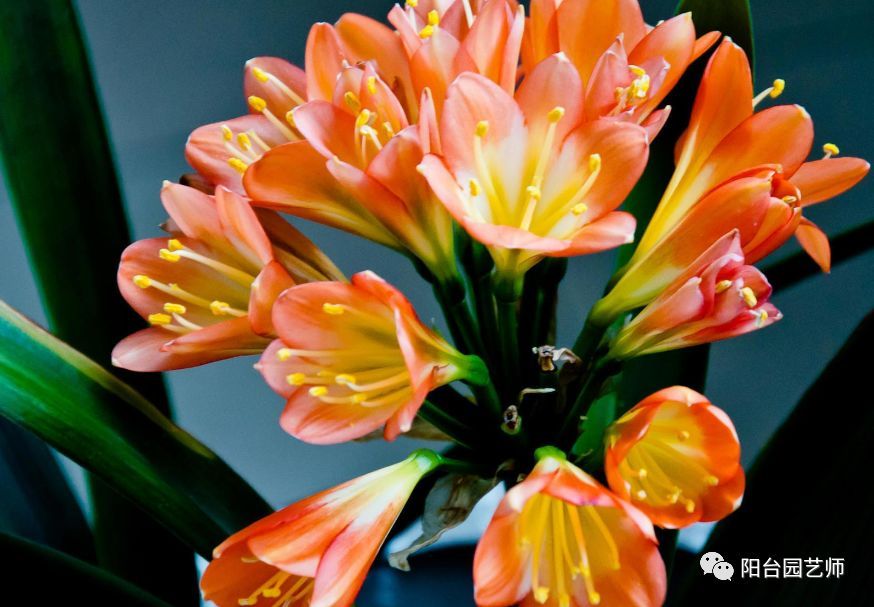Environmental humidity is the double-edged sword of raising orchids to master the exuberant use of orchid leaves

Environmental humidity is a double-edged sword for raising orchids. Orchid leaves are exuberant when used well, but orchid grass is not well used to kill pots.
There is no doubt that most orchids like a wet environment. Most of the places where we find wild orchids in the mountains are in such an environment. Sometimes good farmers will find wild orchids in dry places, but their leaves are obviously not as beautiful as those in wet places.
As a kind of flower that smells fragrance and appreciates leaves, the beauty of leaf shape directly affects the ornamental value of orchid. It is also recorded in some books on how to raise orchids that the small environment of orchids needs to increase air humidity. A humid environment can also reduce the frequency of watering and prevent root rot caused by too much watering.
It is said in the book that the growth of orchids can be divided into vegetative growth and reproductive growth. Vegetative growth refers to the stage of new buds and seedlings from anthesis to the bud stage of the following year. Reproductive growth is the stage from budding to flowering. The vegetative growth period of orchids needs humidity most. If it is too dry, the new seedlings are easy to be stiff and not strong enough.
The new seedlings grown in a humid environment have oily green leaves and beautiful leaves, and there is no withered and yellow leaf tip. But humidity is also a double-edged sword, if the humidity is too high. And if the environmental ventilation condition is not good, the orchid leaves will appear black spots, black leaf tips, rotten new seedlings and so on.
At the same time, most of the germs of orchids like the humid environment, and the temperature of the vegetative growth period is suitable for the reproduction of bacteria, so it is also particularly easy to breed bacteria. We need a humid environment to grow orchid leaves, but also need to prevent diseases caused by excessive temperature. Good farmers do not have specialized instruments to measure humidity, nor can they speak those advanced technical terms, as they do for orchid environment humidity.
The orchid pot of the good farmer is placed on the ground, and the greenhouse is covered with a shade net in the open air. Rain Water can be drenched in the orchid shed when it rains, because there is ventilation around the orchid shed, so the relative temperature is lower than the surrounding. As for humidity, I look at the soil on the ground. If the color of the soil is a little white, it needs to be moisturized by spraying water. Generally speaking, there is less time for manual operation, because the rainy orchid shed ground will absorb a lot of water. This moisture will evaporate during the drought, increasing the humidity in the orchid shed.
To put it simply: orchids must be grown in a moist environment, but an environment that is too wet and poorly ventilated is prone to diseases. Therefore, success is also wet, failure is also wet.
- Prev

How can adult magnolia blossom in spring after changing soil in July?
Thank you for following the balcony gardener and sharing more knowledge and experience of growing flowers. After the adult gentleman orchid changed the pine needle soil in July, as long as it was well maintained in this year or even two years, there was no need to change the soil within two years. Frequent changes of soil to the king.
- Next

Can you see whether Chunlan is a small feature of fragrant leaves? In fact, it is not reliable.
Whether Chunlan is fragrant or not, a small feature on the leaves can be seen. How much have you been cheated by the Internet? When the farmer was communicating with Lanyou, Lanyou said to me: according to the knowledge on the Internet, if Chunlan does not have a petiole ring, it is an unfragrant bean orchid.
Related
- Wuhan Hospital Iron Tree Blooming Result Was Instantly Frightened by the Gardener Master
- Which variety of camellia is the most fragrant and best? Which one do you like best?
- What is the small blue coat, the breeding methods and matters needing attention of the succulent plant
- Dormancy time and maintenance management of succulent plants during dormancy
- Minas succulent how to raise, Minas succulent plant pictures
- What are the varieties of winter succulent plants
- How to raise succulent plants in twelve rolls? let's take a look at some experience of breeding twelve rolls.
- Attention should be paid to water control for succulent plants during dormant period (winter and summer)
- Watering experience of twelve rolls of succulent plants
- Techniques for fertilizing succulent plants. An article will let you know how to fertilize succulent plants.

